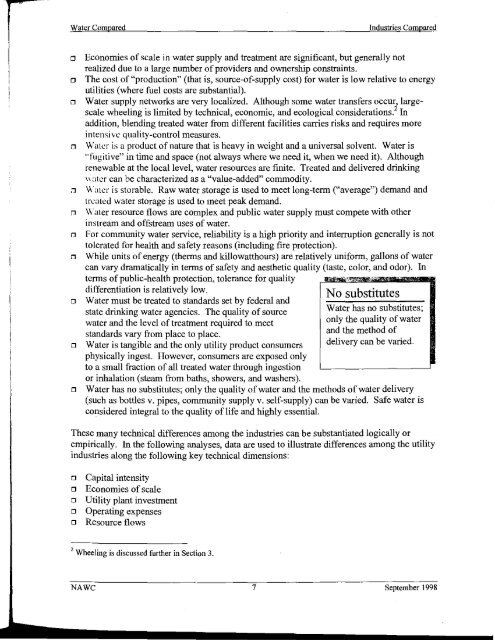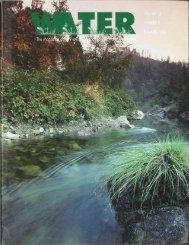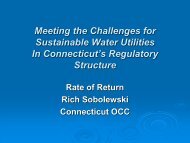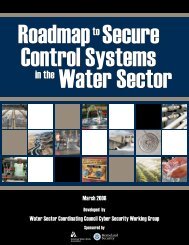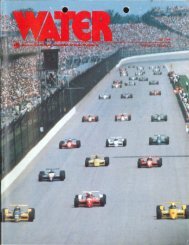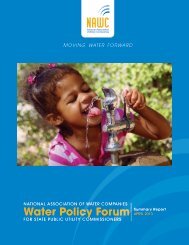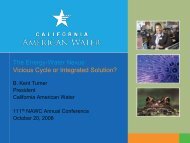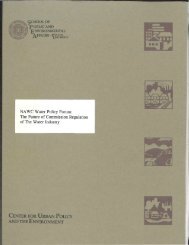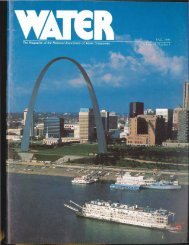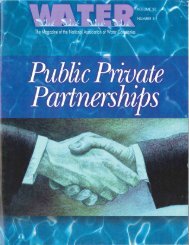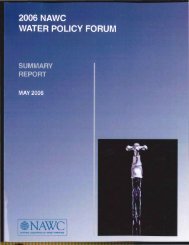BEECHER - NAWC
BEECHER - NAWC
BEECHER - NAWC
Create successful ePaper yourself
Turn your PDF publications into a flip-book with our unique Google optimized e-Paper software.
Water ComparedIndustries Comparedo Economies of scale in water supply and treatment are significant, but generally notrealized due to a large number of providers and ownership constraints.o The cost of "production" (that is, source-of-supply cost) for water is low relative to energyutilities (where fuel costs are substantial).o Water supply networks are very localized. Although some water transfers occur, largescalewheeling is limited by technical, economic, and ecological considerations? Inaddition, blending treated water from different facilities carries risks and requires moreintensive quality-control measures.o Water is a product of nature that is heavy in weight and a universal solvent. Water is•·fugitive" in time and space (not always where we need it, when we need it). Althoughrenewable at the local level, water resources are finite. Treated and delivered drinking"atcr can be characterized as a "value-added" commodity.:J Weller is storable. Raw water storage is used to meet long-term ("average") demand andtreated water storage is used to meet peak demand.n Water resource flows are complex and public water supply must compete with otherin stream and offstream uses of water.o For community water service, reliability is a high priority and interruption generally is nottolerated for health and safety reasons (including fire protection).o While units of energy (therms and killowatthours) are relatively uniform, gallons of watercan vary dramatically in terms of safety and aesthetic quality (taste, color, and odor). Interms of public-health protection, tolerance for quality ,..J"if!l!lli':l'!'· aE>i!i!!BIIIii!llli!differentiation is relatively low.o Water must be treated to standards set by federal andstate drinking water agencies. The quality of sourcewater and the level of treatment required to meetstandards vary from place to place.ooWater is tangible and the only utility product consumersphysically ingest. However, consumers are exposed onlyto a small fraction of all treated water through ingestionor inhalation (steam from baths, showers, and washers).No substitutesWater has no substitutes;only the quality of waterand the method ofdelivery can be varied.Water has no substitutes; only the quality of water and the methods of water delivery(such as bottles v. pipes, community supply v. self-supply) can be varied. Safe water isconsidered integral to the quality oflife and highly essential.These many technical differences among the industries can be substantiated logically orempirically. In the following analyses, data are used to illustrate differences among the utilityindustries along the following key technical dimensions:o Capital intensityo Economies of scaleo Utility plant investmentD Operating expensesD Resource flows2Wheeling is discussed further in Section 3.<strong>NAWC</strong> 7 September !998


